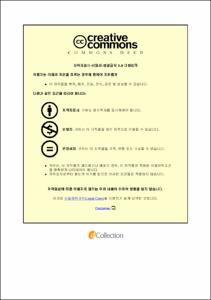고온의 태빙 공정을 제거한 신규 2단계 태양전지 모듈화 공정에 대한 연구
- Abstract
- Crystalline silicon solar cells undergo a tabbing process that uses a metal ribbon to serially connect the solar cells due to the low voltage of less than 700mV. In order to dissolve the solder alloy coated on the metal ribbon, the tabbing process proceeds at a high temperature, which causes micro-cracks and bowing phenomenon due to the generated thermal and mechanical stress in the solar cell during the tabbing process, thereby deteriorating the long-term reliability of the photovoltaic module. In this study, we propose a new photovoltaic modulization that can manufacture photovoltaic module by lay-up and lamination process using low melting point metal ribbon without a high-temperature tabbing process. This new modulization(Layup-Only Modulization, hereinafter abbreviated as LOM) is proposed. The electrical characteristics between the module manufactured through the LOM technology and the conventional soldering method is analyzed under the initial and after thermal environmental test.
- Issued Date
- 2019
- Awarded Date
- 2019. 2
- Type
- Dissertation
- Publisher
- 부경대학교
- Affiliation
- 부경대학교 대학원
- Department
- 대학원 인쇄공학과
- Advisor
- 신동윤
- Table Of Contents
- I. 서론 1
1. 이산화탄소로 인한 비가역적인 기후 변화 1
1.1 대기 온난화(atmospheric warming) 2
1.2 강수량 변화(rainfall change) 2
1.3 해수면 상승(sea level rise) 2
2. 대체 에너지 4
2.1 원자력발전 4
2.2 신재생에너지(태양광발전) 5
2.3 결정질 실리콘 태양전지 5
3. 결정질 실리콘 태양전지의 모듈화 7
3.1 모듈화 공정의 필요성 7
3.2 모듈 제작 공정 7
3.3 모듈 구성 재료 8
4. 연구 배경 12
4.1 태양전지 모듈화를 위한 태빙 공정 12
4.2 기존 태빙 공정의 문제점 13
4.3 고온의 태빙 공정을 제거한 신규 태양전지 모듈화 공정 18
II. 실험 19
1. LOM 기술을 통한 태양전지 모듈 19
1.1 LOM 기술의 정의 19
1.2 메탈리본이 임베디드된 EVA 시트 21
2. LOM 기술을 통한 단위 모듈 22
2.1 단위 모듈 제작에 사용된 재료 22
2.2 메탈리본이 임베디드된 EVA 시트 제작 23
2.3 단위 모듈 제작 과정 24
3. 제작된 단위 모듈 분석 27
3.1 변환 효율 측정 27
3.2 열 사이클(thermal cycle) 시험 30
4. LOM 기술을 통한 2 Х 2 모듈 31
4.1 2 Х 2 모듈 제작에 사용된 재료 31
4.2 메탈리본이 임베디드된 EVA 시트 제작 32
4.3 2 Х 2 모듈 제작 과정 36
5. 제작된 2 Х 2 모듈 분석 39
5.1 변환 효율 측정 39
5.2 EL 이미지 분석 40
III. 결과 및 고찰 41
1. BiSnAg 메탈리본의 용융 테스트 41
1.1 열 프레싱을 통한 저융점 메탈리본의 기계적 특성 42
1.2 열 프레싱을 통한 저융점 메탈리본의 전기적 특성 44
1.3 용융 방법에 따른 접촉 비저항 48
2. 단위 모듈 분석 결과 49
2.1 단위 모듈 효율 측정 결과 49
2.2 열 사이클 시험 결과 50
3. 2 X 2 모듈 분석 결과 52
3.1 2 Х 2 모듈 효율 측정 결과 52
3.2 EL 이미지 분석 결과 53
4. 직렬 저항 상승 원인 분석 및 해결 방안 54
4.1 BiSnAg 메탈리본의 저항 54
4.2 EVA 시트의 확산 58
4.3 문제 해결 방안 60
5. LOM 기술을 통한 태양전지 모듈의 양산화 62
6. 기대효과 및 활용방안 66
6.1 장비 투자비 및 운용비 절감 66
6.2 인건비 절감 67
6.3 차세대 박형 실리콘 태양전지 적용 68
6.4 메탈리본의 굴곡으로 인한 문제점 제거 69
6.5 멀티와이어 태양전지 적용 71
6.6 신뢰성 및 생산수율 향상 그리고 생산단가 절감 73
IV. 결론 74
참고문헌 75
- Degree
- Master
- Files in This Item:
-
-
Download
 고온의 태빙 공정을 제거한 신규 2단계 태양전지 모듈화 공정에 대한 연구.pdf
기타 데이터 / 3.21 MB / Adobe PDF
고온의 태빙 공정을 제거한 신규 2단계 태양전지 모듈화 공정에 대한 연구.pdf
기타 데이터 / 3.21 MB / Adobe PDF
-
Items in Repository are protected by copyright, with all rights reserved, unless otherwise indicated.